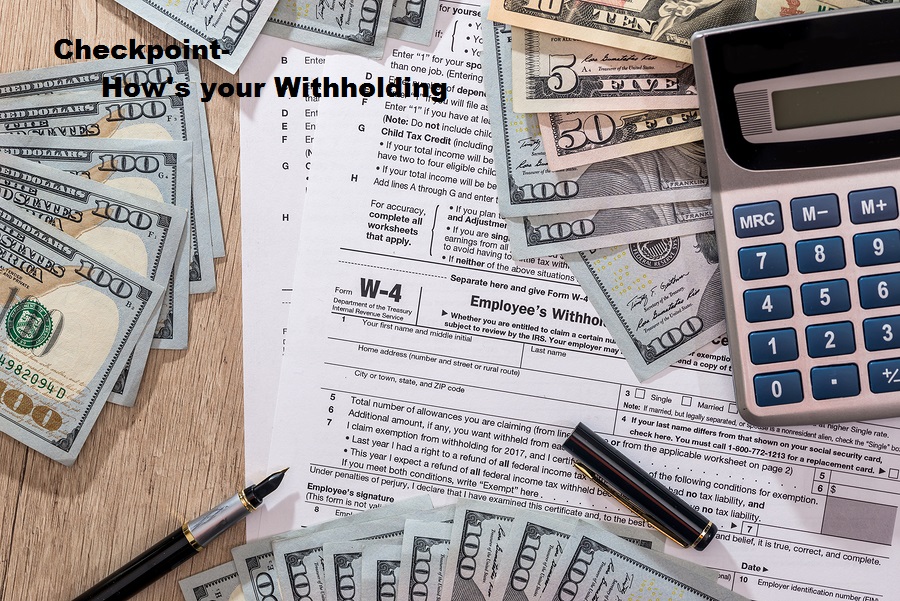The single most popular blog post I ever wrote was about how to fill out your W4 form. Unfortunately, it’s all garbage now with the new tax rules. It’s time to take a new look at how to fill out that W4 form.
First thing to know is that the form is kind of funky. If you look at the 2019 form, well here, take a look: 2019 W4 Form
Being realistic, you might not want your employer to know all that stuff about you. Seriously, is it any of your boss’ business how much income you have outside of work? Or how much you donate to charity? The IRS is already aware that this form is a problem and they’re working on a new one. So far, it’s only a draft and it looks like this: 2020 W4 Form
What I’d like to see on these forms is an option to just withhold a straight percentage. I think that would be the easiest thing to do, but the IRS doesn’t listen to me so we’ll have to work with what we’ve got. Let’s start with the easy ones.
Students
If you are a high school or a college student, and you expect to earn less than $12,000 for the year, you’ll want to claim “exempt”. All you do is write “Exempt” on line 7 of the W4. Leave line 5 blank. Leave line 6 blank. You don’t fill out any of those other pages. Give your employer the first page and you’re done. Easy peasy!
Single People With Only One Job
Whether you’re paid a salary or by the hour, if you are single and working full time, you’re going to check the box that says single and claim one allowance on line 5. That one is also easy.
Married People Where Only One Person Works
If you’re married, and your spouse does not work, you will check the box that says you’re married, and you will claim 2 allowances on line 5. That’s it.
And that’s the end of the easy answers. Let’s look at the harder stuff.
Unmarried People with Children who Always Qualify for EIC
If you have children and in the past you’ve always qualifed for the Earned Income Tax Credit, unless you just got a big raise, you’ll probably still qualify for EIC. In that case, you don’t need a whole lot of withholding. You’re going to check the single box and claim 2 allowances for yourself, plus 4 more for every child you have under the age of 17. You might not have any federal withholding taken out of your check, but in the event that your income is high enough to require some withholding, you should be covered. It’s safer than claiming “exempt” in case you do have some federal tax liability.
Married People with Children who Always Qualify for EIC
It’s harder to qualify for EIC when you’re married because if both spouses work, the second income often kicks you over the limit. If only one spouse is working, check the married box and claim 2 allowances for you and your spouse together, plus 4 more for every child under the age of 17. Same as above.
If you both work, it’s a little trickier. Have the higher income spouse “married but withhold at the higher single rate” with one allowance, plus 4 allowances for each child under the age of 17. Have the lower income spouse claim “married, but withhold at the higher single rate” with 1 allowance. This should protect you in the event that the second income kicks you out of the EIC tax credit range.
Multiple Jobs, High Income Earners, and Working Spouses
The absolute best thing to do in this situation is to use the IRS withholding calculator. Here’s the link: IRS Withholding Calculator
Once you get to that page, you’re going to want to click on the blue box that says “Withholding Calculator”. You’re going to want to have your most recent tax return and most recent pay stubs with you when you do this. The IRS withholding calculator asks a lot of questions, (full disclosure, it’s kind of annoying) but it’s going to give you the most accurate results.
Good Grief, I Can’t Stand it! Is There Any Other Way?
Okay, this is my cheater trick. Did you owe last year? If not, you probably don’t need to change what you’re doing. If you did owe, don’t change your allowances, just add additional withholding to make up the difference in tax that you owed.
For example: let’s say that you claimed single with 2 allowances last year but you wound up owing an additional $1,000 in taxes for whatever reason. If you get paid every other week, that means you get 26 paychecks a year. You’d take $1,000 divided by 26, so you’d have an extra $38.46 taken out of each check.
Of course, if you’ve only got 14 pay periods left in the year, you might want to withhold more now and change it in January. Or you could set the rate now and just make an estimated tax payment to cover the difference. Do what works best for you.
I Still Need Help
I get it, this is confusing. Literally hundreds of people asked questions on the old blog post. I had to quit answering them. I just could’t keep up. I have my regular clients to attend to and it was overwhelming. If you still need help, contact your tax advisor. If you’re already paying someone to do your taxes, they should be able to help you with your W4, and they’re going to know so much more about you than I will.
If you don’t have a tax advisor, you can call my office and I can help you with this, but I’m going to charge you $200 to prepare your W4. I would need your most recent pay stubs and your latest tax return.





![4284120074_94cebe4f72_m[1] Payroll check stub](http://robergtaxsolutions.com/wp-content/uploads/2011/02/4284120074_94cebe4f72_m1-150x150.jpg)
